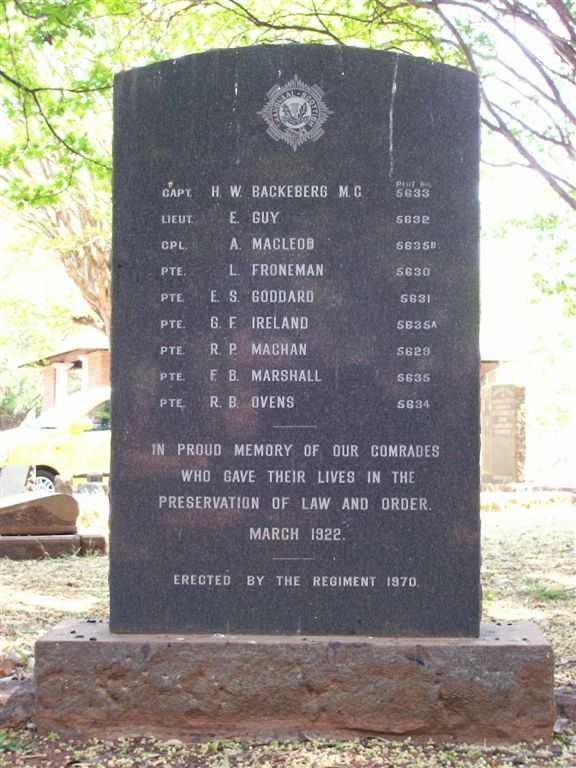Gauteng, JOHANNESBURG, Urban area / Gauteng, JOHANNESBURG, Brixton / Gauteng, JOHANNESBURG, Brixton, Main cemetery / (9 of 12 images)
Cemetery information:- The first burial in New Cemetery (Brixton) was in 1910 as the Braamfontein Cemetery filled up and more space was needed. As early as 1905 it was reported that “Braamfontein would be fully occupied within 20 months” with 50 burials a week. Brixton is 84 acres in size, located approximately one kilometre west of Braamfontein Cemetery. It was the principal Johannesburg cemetery until it reached capacity and was replaced by West Park/Montgomery Park Cemetery in 1942. However, Brixton comprises many family plots so people continued to be buried there even after West Park had been opened. (source: https://www.theheritageportal.co.za/article/nostalgia-and-remembrance-brixton-cemetery) The Jewish section (incomplete) of the cemetery is included in this album.
Album incomplete, we do not have photographs of all the headstones.
Photographs by Annelie Els, Penny Shaddock, Frik Venter, Johan Viktor, Derek Walker, Fanie Buys, Tombi Peck, Brian Britz, Johan Reyneke, Gwyneth Thomas, Mathilda van Zyl, Peter & Beverley Moss, Clem Berry, Johan Neethling, Sarah Welham, Blanche Price, Ronellda Cronje, Annette van Rensburg, Gail Wilson & Christopher Fitchet.
eGGSA captions done by: Angela de Klerk, Heleen Nel, Fanie Buys, Wilna Eygelaar, Eleanor Garvie, Dal Good, Brian Britz, Esmé van der Westhuizen, James Anderson, Sandie Williams, Kenneth Knight, Annel Meyer, Don Woodford, Lisa Botes, Andries Holtzhausen, Eileen de Jager, Lorraine Beechey, Arlene Leggat, George Crewe, Retha Hillman, Carol Gainsford, Riana le Roux, Fern Swales
The GGSA Cemetery DVD only has record of the cemetery location:- Cemetery ID: 2251 Google Earth Project Information:- GPSID: 2645 GPS: -26 11.883, 28 00.916
09. Memorial - Transvaal Scottish Regiment - Rand Revolt - March 1922
The Rand Rebellion of 1922 was an armed uprising that is also referred to as the Rand/Red Revolt. It occurred during a period of economic depression following World War I, when mining companies were faced with rising costs and a fall in the price of gold. On 8 March, led by semi-skilled Afrikaner miners, white workers attempted to take over the Johannesburg post office and the power station, but they met with stout resistance from the police, and the day ended in fights between white strikers and black miners. Martial law was proclaimed and burgher commandos were called up from the surrounding districts. On Saturday, 11 March, the Reds attacked a small detachment of the Imperial Light Horse at Ellis Park in Doornfontein, which sustained serious losses, and, on their way to the East Rand, the Transvaal Scottish marched into an ambush at Dunswart, sustaining heavy losses. The rebels searched citizens passing through Jeppestown and Fordsburg and sniped at those they thought were supporters of the mine management, as well as many policemen on duty in the streets. On Sunday, 12 March, military forces and citizens attacked the rebels holding out on the Brixton ridge and took 2,200 prisoners. The next day government troops led by General van Deventer relieved the besieged police garrisons in Brakpan and Benoni. On 15 March, the artillery bombarded the strikers' stronghold at Fordsburg Square and in the afternoon, it fell to the government. BACKEBERG H.W. GUY E. MACLEOD A. FRONEMAN L. GODDARD E.S. IRELAND G.F. MACHAN R.P. MARSHALL F.B. OVENS R.B.
contributed by: Derek Walker
viewed 1157 times

